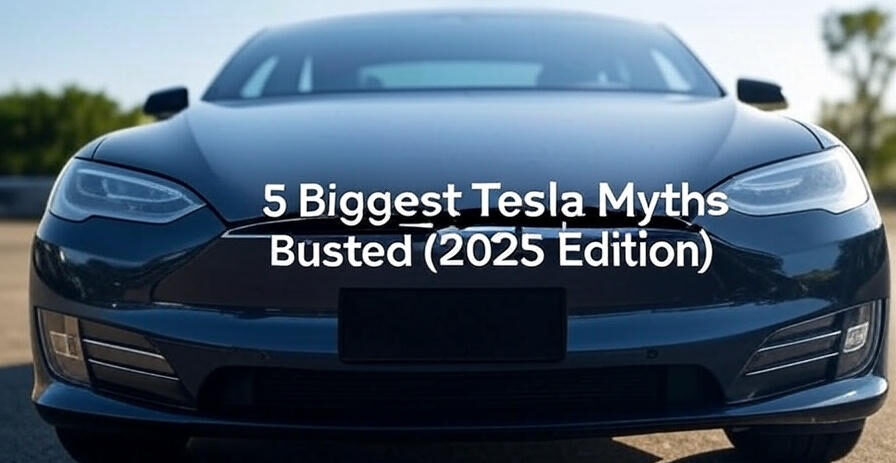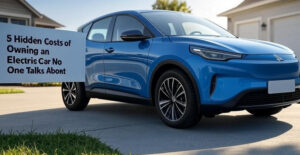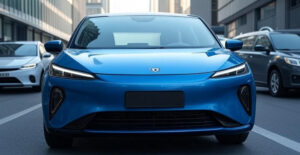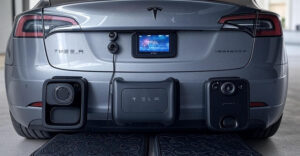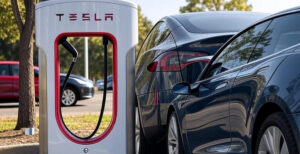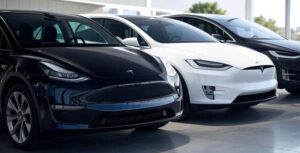Alright, gather ‘round folks — we’re gonna bust some Tesla myths wide open like a piñata at a five-year-old’s birthday bash. You’ve probably heard all sorts of wild stories, some from your uncle who swears his neighbor’s cousin’s boss once had a Tesla catch fire in the rain. Others you’ll see plastered across clickbait headlines, spinnin’ fear like cotton candy at the fair.
So, here’s my no-nonsense, real human-to-human rundown of the five biggest Tesla myths in 2025. I’ll break ‘em down, toss in some real-world tales, sprinkle a little humor, a dash of “oops, Tesla did what?” — and make you feel like you’re getting the inside scoop from that EV nerd buddy we all have. Stick around ‘til the end, ‘cause I’ve got a chunky Q&A so you’ll never get stumped at the next BBQ when someone says, “Aren’t Teslas, like, bad for the planet?” Buckle up, let’s roll.
Myth #1: Teslas Catch Fire All the Dang Time
The Story
If I had a nickel for every time someone said, “Aren’t Teslas basically rolling fireballs?” — I’d have enough nickels to buy a Roadster (well, maybe just the tires). The image of an EV burstin’ into flames is so stuck in folks’ heads it’s become campfire lore.
The Truth
Fact is, your grandma’s old gas sedan is way more likely to go up in flames than a Tesla. Yep — according to the National Fire Protection Association, gas cars have about a 60x higher chance of catchin’ fire compared to EVs. Why? A tank full of flammable liquid and hot engine bits rubbin’ elbows.
Does it mean Teslas never catch fire? Nope — batteries can still fail. But Tesla’s got thermal management and firewalls that help keep flames contained. Also, when’s the last time you heard about gas car fires on the news? Exactly.
Real Talk Example
My buddy Liam rear-ended a truck with his Model Y. Battery? Banged up, but no Hollywood explosion. Tow truck showed up, car turned into scrap, everyone walked away un-barbecued.
Myth #2: Tesla Batteries Die After 5 Years
The Story
“Don’t buy a Tesla! The battery’ll turn into a giant paperweight after five years!” Ever heard that one? It’s one of those myths that refuses to die.
The Truth
Most Tesla owners are cruisin’ around with 80–90% of their original battery range after 8–10 years. Tesla’s own warranty backs you up for 8 years or up to 150,000 miles (depending on the model). In the real world, you’ll probably get tired of your Tesla before the battery dies.
Yes, batteries degrade. A few percent each year — not like your iPhone that feels old after 12 months. Keep it charged between 20%–80%, avoid crazy fast charging every day, and you’re golden.
Real Talk Example
Priya’s 2016 Model S has 180k miles. Still does road trips just fine, loses about 30 miles range from what it had brand new. She’s more worried about her golden retriever scratchin’ the seats than the battery givin’ out.
Myth #3: Charging a Tesla is a Huge Hassle
The Story
Some folks think owning a Tesla means sittin’ in random parking lots for hours, watchin’ paint dry while your car sips juice like a turtle. They’ll say, “I’ll stick to gas, thanks — it takes two minutes to fill up.”
The Truth
Charging at home is the game changer. Plug in overnight, wake up with a “full tank.” That’s it. No more late-night gas station runs with sketchy hot dogs under heat lamps.
Road trips? Yeah, ya gotta plan a bit more. But with Tesla’s Supercharger network, you’ll grab 200 miles of range in 15–20 minutes — enough time for a bathroom break, a burrito, or scrolling TikTok.
Real Talk Example
My neighbor Dan does 2,000 miles a month for sales gigs. He says he’s never stressed about charging ‘cause he just hits Superchargers between meetings. Plus, he’s spendin’ less than he did on gas — and no more dirty fuel pumps in the rain.
Myth #4: Teslas Aren’t Really Green
The Story
“Oh sure, you’re savin’ the planet, but what about the battery mining and dirty electricity?” This is a hot myth for the “well, actually” crowd.
The Truth
Yeah, making batteries takes energy — so does makin’ an engine block or refining oil for gas cars. The big difference? After the battery’s built, a Tesla runs on electricity, which keeps getting greener every year. Solar, wind, hydro — more of the grid is renewable now than ever.
Over its lifetime, a Tesla will generally pump out less than half the emissions of a gas car — even if you live somewhere with coal plants. And when the battery’s toast? Tesla recycles up to 90% of it. Circle of life, baby.
Real Talk Example
Sarah in Arizona charges her Model 3 with solar panels on her roof. Her “fuel” is literally sunshine. Try stickin’ that in your gas tank.
Myth #5: Self-Driving Means You Can Nap
The Story
People think Full Self-Driving (FSD) means your Tesla’s basically KITT from Knight Rider. You just jump in, yell “take me to Vegas,” and pass out.
The Truth
Nope. Tesla’s FSD is impressive — it’ll change lanes, navigate highways, and creep through city streets in Beta mode — but it still needs a human to take over. You gotta keep your hands on the wheel and your eyes on the road. It’s like havin’ a teenage driver: mostly good, sometimes terrifying, always needs supervision.
Real Talk Example
Marcus tried to show off to his buddy by chillin’ with his hands off in city traffic. Tesla nagged him with beeps and eventually kicked Autopilot off. Sorry pal, no robo-nap yet.
So, Are Teslas Perfect? Heck No
Don’t get it twisted — Tesla’s got plenty of quirks. Fit and finish can be wonky, service appointments take forever, and the CEO tweets like your weird cousin. But if you’re buying one based on facts, you’ll probably love it.
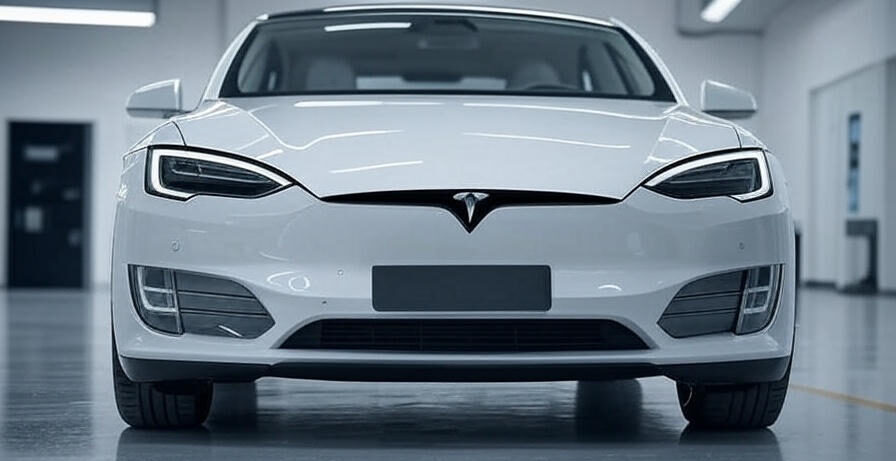
Quick Tips for Newbies
✅ Get a Level 2 home charger.
✅ Keep your battery charged between 20–80%.
✅ Use Superchargers for road trips, not daily top-ups.
✅ Don’t believe every Tesla “horror story” video online.
✅ Join a local Tesla group — they’ll save ya headaches.
Q&A: Tesla Myths, Busted Again
1. Can a Tesla battery explode in an accident?
It’s super rare. Gas tanks blow up way more often. Tesla’s battery pack has firewalls to limit damage.
2. Is replacing a Tesla battery crazy expensive?
It can be — $10–$20k depending on model. But most owners won’t need one for 10+ years.
3. Can I road trip across the country in a Tesla?
Absolutely. The Supercharger network makes it easy. Just plan stops in advance.
4. Is charging really cheaper than gas?
Most of the time, yes. Home charging costs 3–4x less than a gas tank fill-up.
5. Do Teslas work in cold weather?
They do, but range drops about 10–30%. Precondition your battery for best results.
6. Can you tow with a Tesla?
Yep — especially the Model X and Cybertruck (when that actually shows up). But towing kills range fast.
7. Are Tesla interiors really that basic?
Some folks love the minimal vibe. Others miss buttons. It’s a taste thing.
8. Does Full Self-Driving drive itself yet?
It’ll do a lot, but you still need to be ready to take over any second.
9. Is the resale value good?
Pretty solid! Teslas hold value better than most gas cars — battery health matters though.
10. Do Tesla owners really love their cars that much?
Yep. Most say they’d never go back to gas. It’s kinda cult-like in the best way.
11. Can you charge a Tesla in the rain?
Totally safe. The charger and port are weather-sealed.
12. Should I wait for a new model?
There’s always a new one around the corner. If you need a car now, just get it — don’t let “what ifs” drain ya.
Final Thoughts
So there ya have it — the 5 biggest Tesla myths smashed to bits like a dropped phone. Are they perfect? Nah. But if you’re armed with facts and not YouTube doom spirals, you’ll know exactly what you’re buyin’.
Now go flex on your gas buddies next time they brag about their “zero to 60.” Oh wait — you’ll win that, too. Happy driving!
